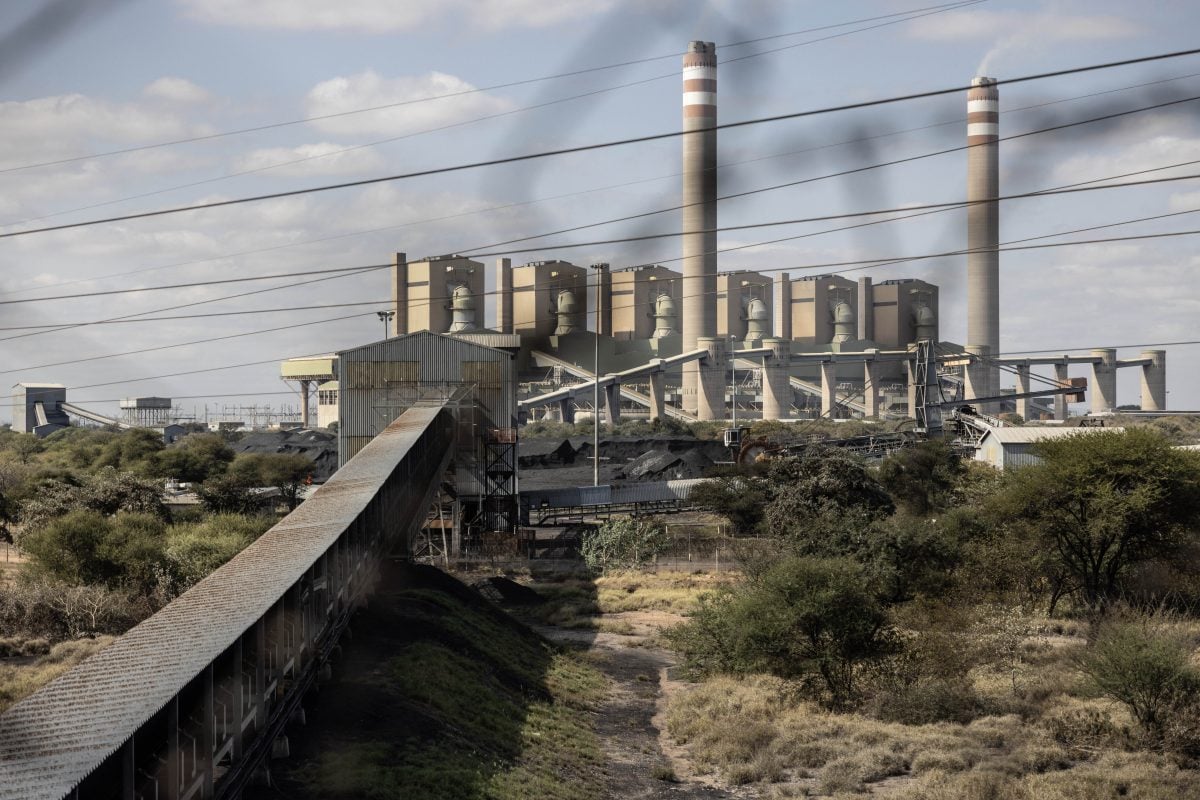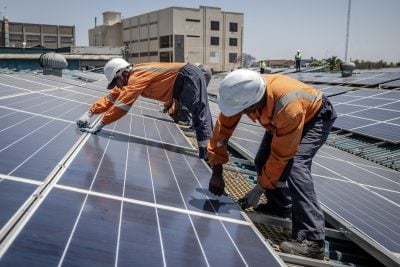After years of lurching from crisis to crisis, Eskom, the embattled South African electricity utility, finally had something to celebrate last month when it announced an annual pre-tax profit of R23.9bn ($1.4bn). This marks the first time in eight years that the state-owned company has been in the blac
“Following years of constrained performance, we are beginning to see the tangible benefits of our recovery strategies, with marked improvements across key financial metrics,” said Eskom’s chief financial officer Calib Cassim.
Eskom, like other state-owned utilities, has been mired in various corruption and mismanagement scandals for many years (one former CEO even claims to have been targeted in a murder plot). Amid increasingly disastrous power cuts, known locally as loadshedding, President Cyril Ramaphosa launched ‘Operation Vulindlela’ – meaning “clear the way” – in 2020 in an effort to reform utilities. The government also appointed a new board for Eskom in 2022, bringing greater technical expertise.
After losses of R34.6bn ($2bn) in 2023 and R25.5bn ($1.5bn) in 2024, the turnaround efforts now appear to be bearing fruit. Loadshedding has dropped dramatically over the last 18 months as breakdowns at coal-fired power stations have subsided, allowing Eskom to reduce costs by relying less on expensive diesel generators.
But a daunting set of challenges still remain.
Encouraging recovery
Eskom’s ability to return to profit rests on several factors.
Connor Vasey, director at advisory firm J.S. Held, says “by far the biggest contributor” to Eskom’s revival has been the government’s decision to help the parastatal relieve its debt burden. After multiple bailouts dating back 15 years, Ramaphosa announced a five-year debt relief programme in 2023.
“That massively reduced financing costs for the utility and basically created the space for all other interventions,” Vasey says.
He notes, for example, that it would not have been possible for Eskom to finance a major maintenance programme in 2023 without having first secured debt relief from the government. This programme bore fruit the following year, when outages at Eskom’s fleet of coal-fired power stations dramatically reduced.
According to Eskom, loadshedding took place on just 13 days in the 2025 financial year (ending in March), compared to a massive 329 days over the previous 12 months.
The government has now started to scale-back its debt relief programme, in light of Eskom’s improved financial performance. In the national budget in March, the Treasury estimated debt relief for Eskom would total R230bn ($13.2bn) over the period, about R24bn ($1.38bn) less than originally expected.
Meanwhile, Eskom itself credits a more than 12% hike in electricity tariffs as key to its improved financial performance. The utility has spent years lobbying NERSA, the regulatory body that sets prices, to agree to tariff increases.
Kimera Chetty, lead advisor at consulting company Africa Practice, says the improved performance is down to “political will coupled with sustained coordination across multiple actors to steady the ship”.
Debt relief and reduced loadshedding, along with improved management and governance, have made a “decisive difference,” she says. But Chetty points out that around half of Eskom’s pre-tax profit came as a result of a tax settlement with the South African Revenue Service, which allowed it to receive rebates that had previously been disallowed on diesel payments from previous years.
And Eskom still has a long way to go on improving governance, she adds, with auditors pointing to ongoing problems.
“If you strip out the one-off tax benefit, the profit is smaller. The audit opinion is still qualified, which tells you internal controls and reporting have not fully recovered. Plant performance has improved, yet it is not at target, and the system remains fragile. A lot of the revenue lift has come from steep tariffs that are tough on households and businesses.”
“I would call this a credible first step, not mission accomplished,” says Chetty.
Debt headaches
As well as Eskom’s ongoing dependence on government support and increased tariffs, the most obvious cloud on the horizon for the utility is the fact that municipal governments are failing to pay their bills.
In South Africa, power users typically pay electricity bills to municipal governments, which are then supposed to pay Eskom in bulk. In practice, the system has increasingly broken down across large parts of the country. Jee-A van der Linde, senior economist at Oxford Economics Africa, notes that arrears from municipalities have increased by some 27% in the last financial year and now stand at R94.6bn ($5.54bn). It is a problem, he says, that poses “serious risks to South Africa’s future energy landscape”.
Of the country’s 257 municipalities, 71 are included in a debt relief programme set up two years ago. This allows the municipalities to have their debts to Eskom written-off by the national government, providing they pay their current bills on time. In practice, however, few have been able to meet this condition.
Eskom’s struggle to collect revenue does, of course, pose a fundamental threat to its viability.
“If a large share of the customer base does not pay, the model breaks,” says Chetty. The utility is attempting to move more electricity users onto pre-paid meters, which allow it to disconnect electricity supplies if the customer fails to pay. The meters are also supposed to make it easier for Eskom to detect theft and illegal connections.
Yet the success of these efforts remains uncertain amid a troubled initial rollout. In announcing its latest financial results, Eskom itself acknowledged that unpaid bills, along with its dependence on government support, mean “there is material uncertainty regarding Eskom’s going concern status.”
Wider implications
Every South Africa is more than aware of the damage to the wider economy caused by the collapse of Eskom’s operational performance during the loadshedding years. At its peak in 2023, blackouts cost the country almost R3tr ($174bn) in lost output, according to estimates by the Council for Scientific and Industrial Research.
While the recovery in Eskom’s operational and financial performance is good news for the economy overall, it has come at the cost of significantly increased electricity prices. With the latest 12.5% rise, electricity prices have increased by 500% since 2010.
“Businesses and consumers are increasingly feeling the strain of rising electricity prices, which consistently outpace inflation,” says van der Linde, who notes that the punishing cost of power undermines the country’s efforts to revive mining and other heavy industries. “I don’t think the environment is conducive to expanding the economy’s industrial base.”
The long-term solution, experts agree, is to create a more competitive power market. This is already coming into play; plans to ‘unbundle’ Eskom by separating its generation, transmission and distribution functions were first announced in 2019, with the vision that the generation arm will eventually compete with other generation companies to produce electricity at competitive prices.
Yet for now, the system is at a half-way house stage. Large industrial power users and wealthy homeowners have increasingly voted with their feet by installing their own solar panels and battery storage, in some cases disconnecting from the grid entirely. But this option is not yet available to lower-income households, given the high upfront costs of installing solar panels or other energy technologies.
While Eskom remains responsible for delivering the vast majority of the country’s power, the rise in self-generation leaves the utility with “a weaker customer mix,” says Chetty.
While Eskom has certainly improved its position, few in Megawatt Park, the utility’s Johannesburg headquarters, can feel confident that its troubles are over.
Want to continue reading? Subscribe today.
You've read all your free articles for this month! Subscribe now to enjoy full access to our content.
Digital Monthly
£8.00 / month
Receive full unlimited access to our articles, opinions, podcasts and more.
Digital Yearly
£70.00 / year
Our best value offer - save £26 and gain access to all of our digital content for an entire year!

 Sign in with Google
Sign in with Google 



